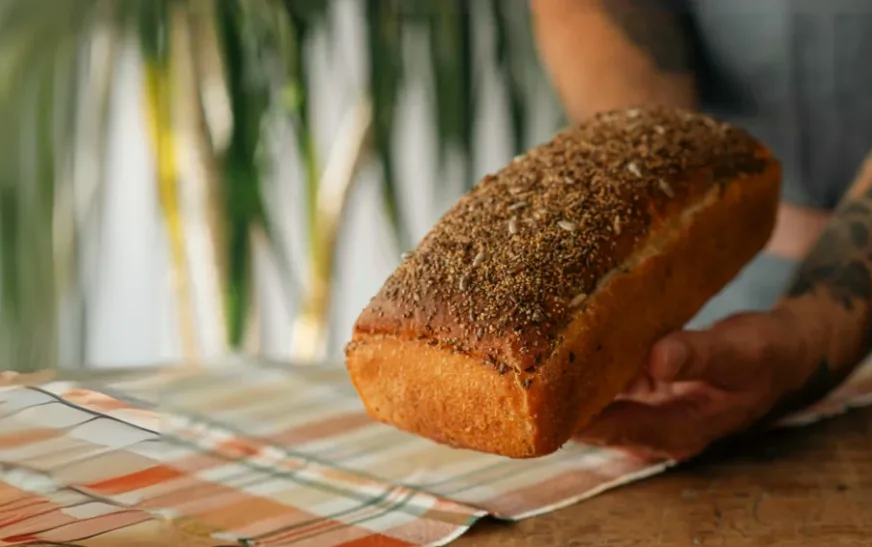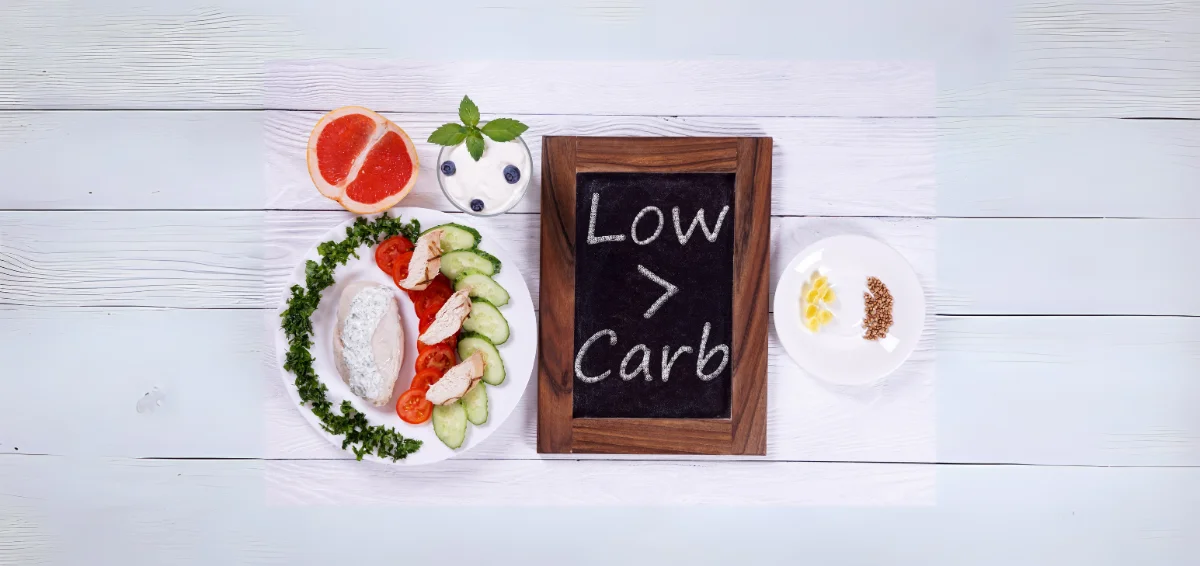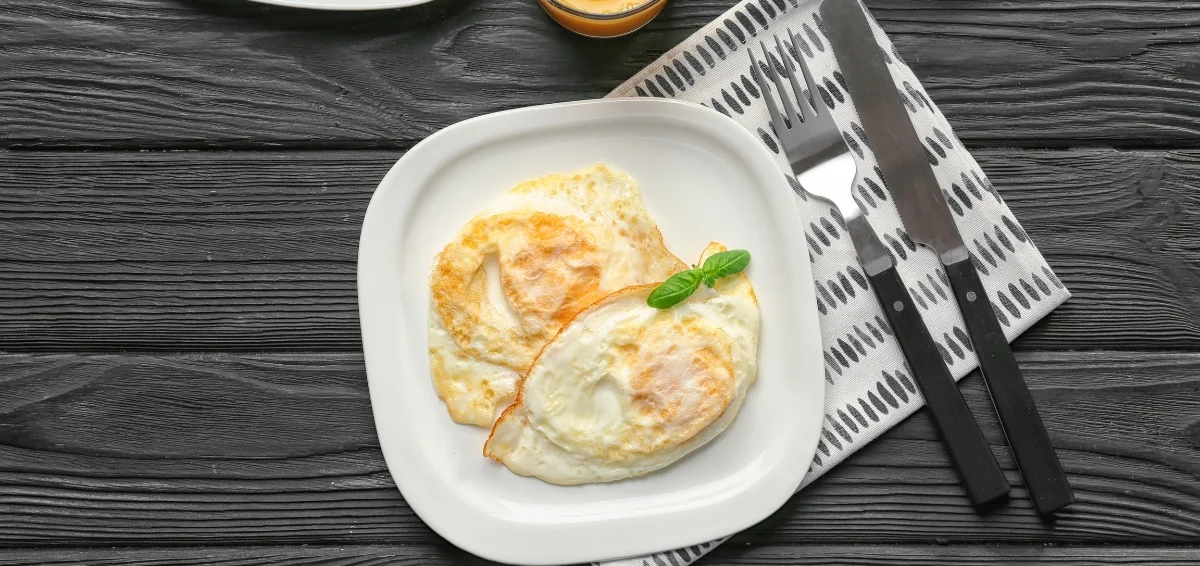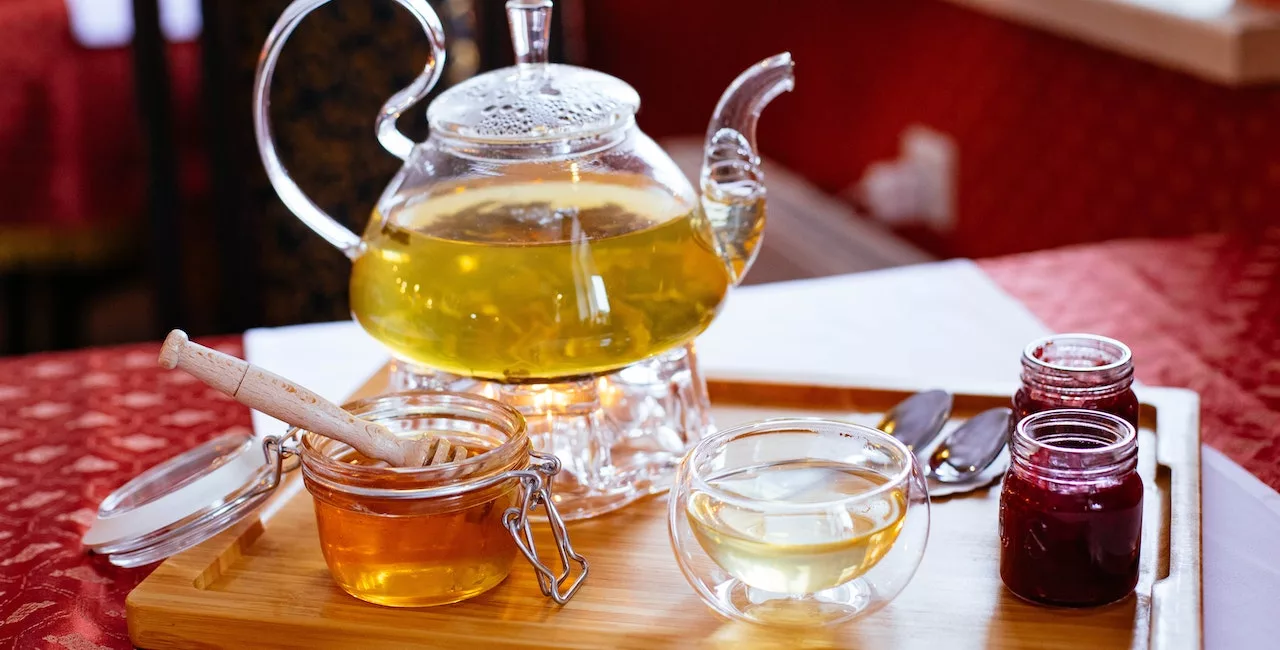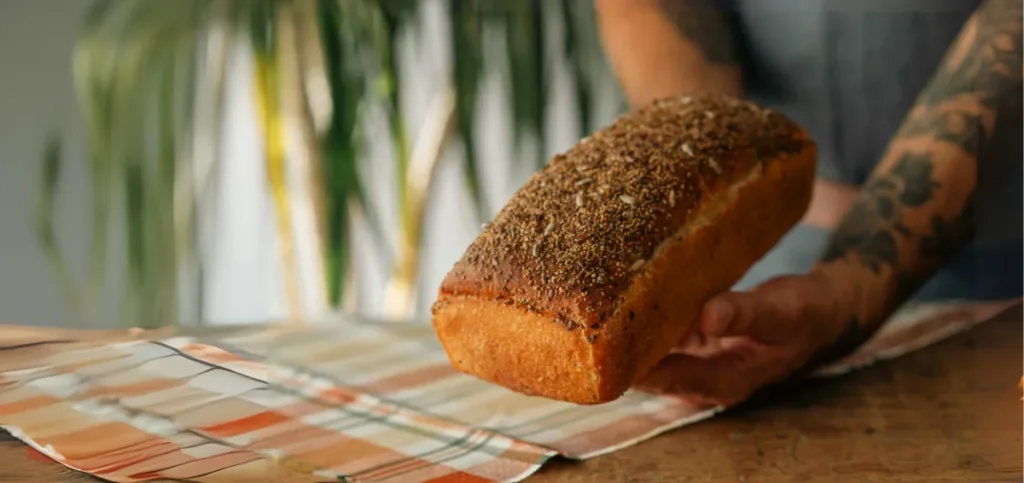
Whole-grain breads are more than just a healthier alternative. They are packed with nutrients and fibre. Plus, they have a delicious flavour. Unlike refined white bread, whole grain options retain the bran and germ. This offers better digestion and longer-lasting energy. However, with so many types of bread out there, which ones are worth trying? In this guide, you will go through some of the best whole-grain bread varieties that you can enjoy to fuel your body and satisfy your taste buds. Whether you are gluten-free or just health-conscious, there is something here for everyone.
Best Whole Grain Bread
1. Sourdough Bread
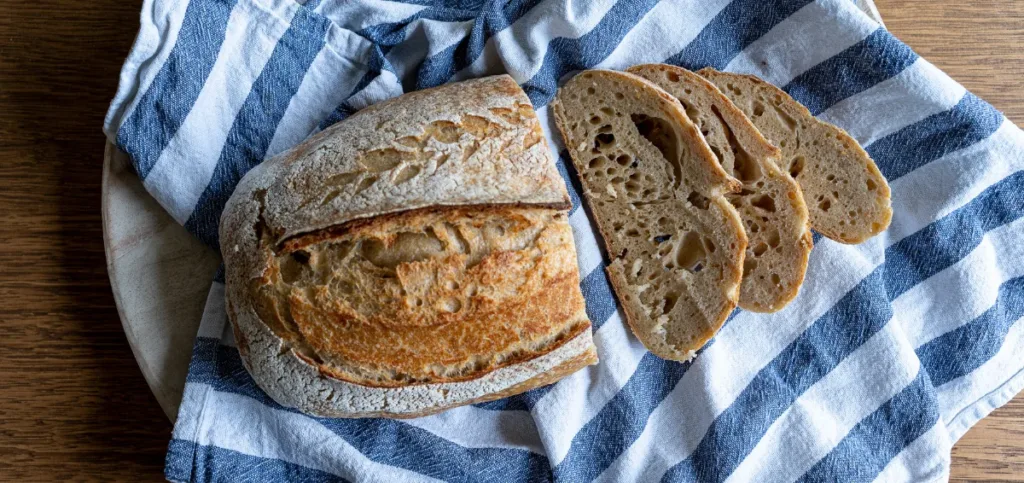
Sourdough is unique because it’s fermented using wild yeast and lactic acid bacteria naturally. Traditionally made with whole grains, it has a rich and tangy flavor. Plus, it has a chewy crust. The fermentation process makes it easier to digest and lowers its glycemic index, making it a popular choice for healthy eaters.
Nutritional Composition
- Rich in fibre and B vitamins
- Contains beneficial probiotics from fermentation
- Lower glycemic index than white bread
- Good source of iron and magnesium
How to Make It
- Mix whole-grain flour with water and a sourdough starter.
- Let it ferment for 8–12 hours.
- Knead and shape the dough.
- Bake at 450°F for 30–40 minutes.
2. Sprouted Whole Grain Bread
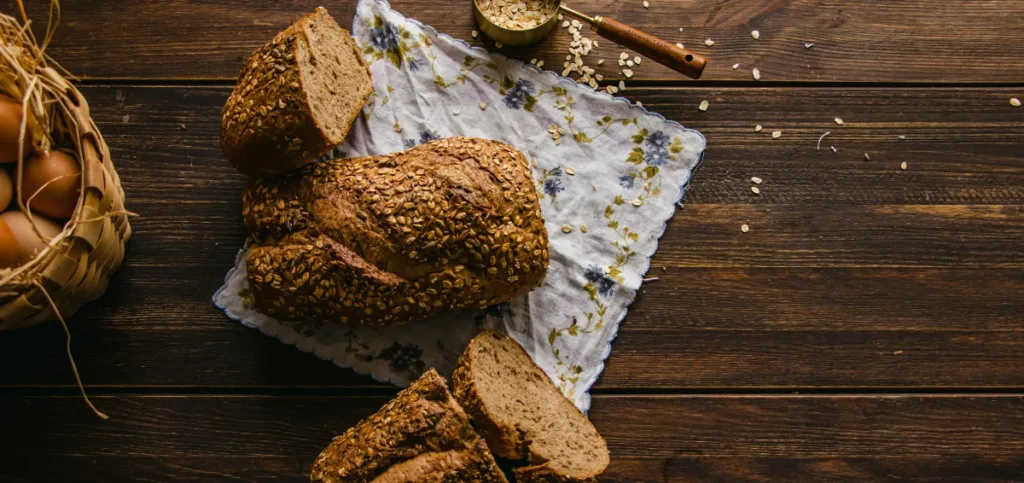
Sprouted bread is made from whole grains that have started to germinate. This process breaks down starches and boosts vitamin levels. In fact, it makes the grains easier to digest. It is dense and nutty in flavour. Plus, it is packed with nutrients, making it one of the best whole-grain bread options for clean eating.
Nutritional Composition
- High in fiber and protein
- Enhanced levels of vitamins C, B, and folate
- Contains fewer anti-nutrients
- Rich in enzymes that aid digestion
How to Make It
- Soak whole grains (like wheat, barley) for 8–12 hours.
- Allow grains to sprout for 2–3 days.
- Grind into dough with water and salt.
- Bake at 350°F for 30–35 minutes.
Read More: Low Glycemic Breakfast
3. Flax Bread
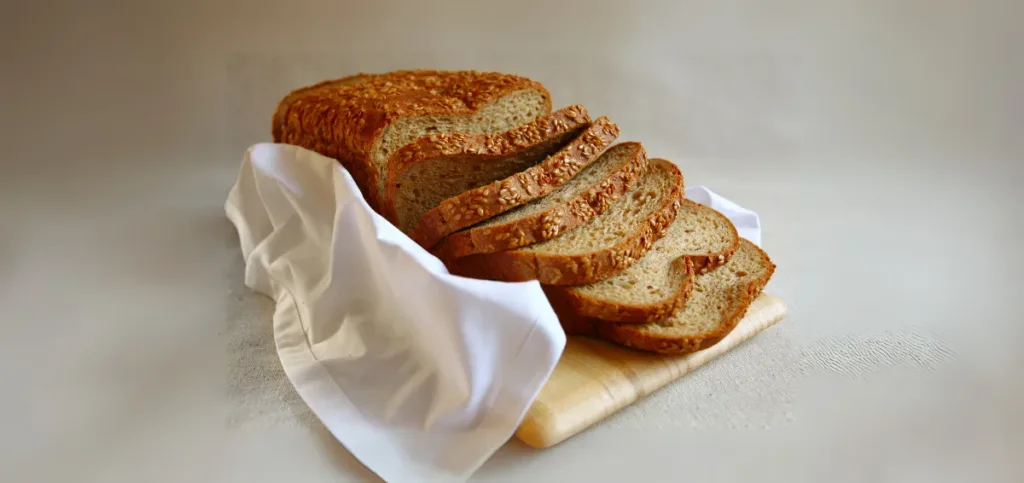
It combines whole grains and ground flaxseeds for a hearty and nutritious loaf. Flaxseeds are known for their omega-3 fatty acids and high fibre content. The bread has a slightly nutty flavour and a moist texture. So, it is perfect for toasting or sandwiches.
Nutritional Composition
- High in omega-3 fats
- Excellent source of soluble and insoluble fibre
- Contains lignans, a plant compound with antioxidant benefits
- Low in saturated fat
How to Make It
- Mix whole-grain flour with ground flaxseeds.
- Add yeast, warm water, and honey.
- Let it rise for 1 hour.
- Bake at 375°F for 35–40 minutes.
4. Oat Bread
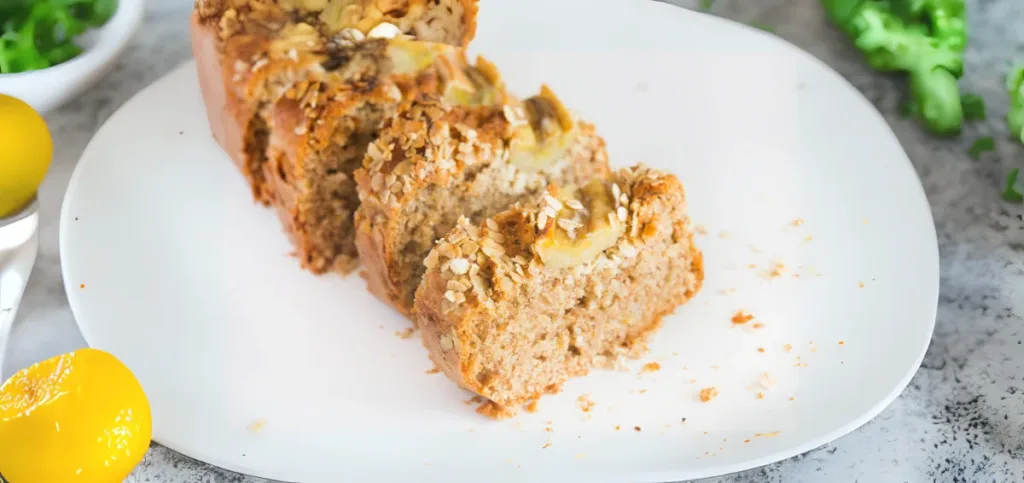
It is soft and slightly sweet. In fact, it is a great source of complex carbs and soluble fiber. It helps reduce bad cholesterol and keeps you full longer. When combined with whole wheat or rye, oat bread makes a versatile and heart-healthy option.
Nutritional Composition
- High in beta-glucan (a soluble fiber)
- Lowers LDL cholesterol
- Rich in iron and manganese
- Supports blood sugar control
How to Make It
- Soak oats in warm water for 10 minutes.
- Mix with whole wheat flour, yeast, and honey.
- Let the dough rise for 1 hour.
- Bake at 350°F for 35 minutes.
5. 100% Whole Wheat Bread
This is the classic go-to for anyone switching to healthier bread. Made entirely from whole wheat flour, it retains the bran, germ, and endosperm of the grain. It’s hearty, slightly nutty, and offers more nutrients than standard wheat bread.
Nutritional Composition
- High in dietary fibre
- Great source of B vitamins
- Provides iron, zinc, and magnesium
- Low in added sugar (if homemade)
How to Make It
- Combine 100% whole wheat flour, yeast, warm water, and honey.
- Knead and let it rise for 1 hour.
- Bake at 375°F for 35–40 minutes.
6. Rye Bread
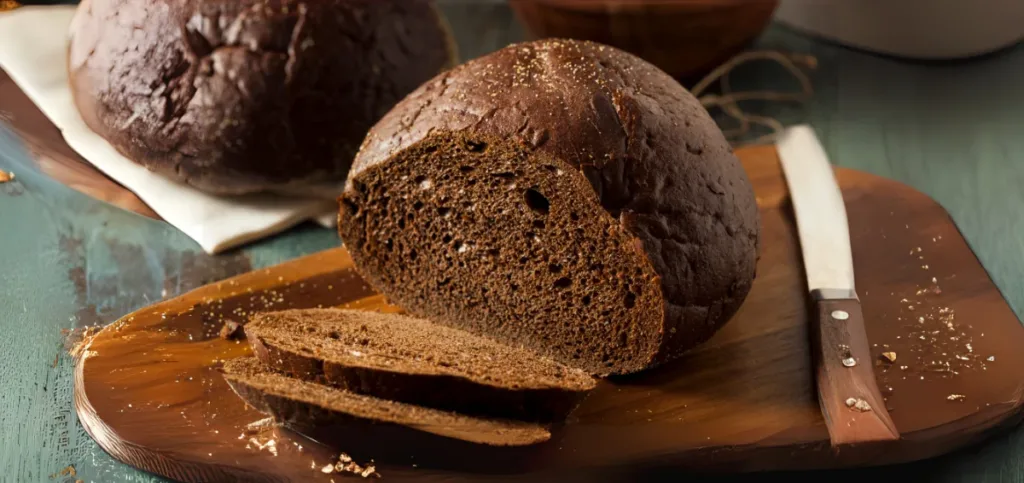
It has a dense texture and strong flavour, often darker in colour. Traditionally, it is made with rye flour and is popular in Eastern European diets. Rye digests more slowly than wheat, keeping you fuller for longer and stabilising blood sugar.
Nutritional Composition
- High in fibre and resistant starch
- Rich in manganese and selenium
- Helps control blood sugar spikes
- May aid in weight management
How to Make It
- Mix rye flour, caraway seeds, yeast, and water.
- Let the dough rest for 2 hours.
- Shape and allow a second rise.
- Bake at 375°F for 35–40 minutes.
7. Multigrain Bread
The bread combines several grains like oats, barley, millet, quinoa, etc. It delivers a wide variety of nutrients and has a nutty, rich flavor. Just be sure to choose options labeled “whole grain” to ensure all the grains used are unrefined.
Nutritional Composition
- Rich in dietary fiber
- Contains a blend of vitamins and minerals
- Offers different types of plant-based protein
- Boosts digestion and heart health
How to Make It
- Mix whole grain flour with oats, millet, and flax.
- Add yeast, honey, and warm water.
- Let rise for 1 hour.
- Bake at 375°F for 35–45 minutes.
Read Also: 7 Worst Foods for Gut Health
8. Gluten-Free Bread (Whole Grain-Based)
For those with celiac disease or gluten sensitivity, gluten-free whole-grain bread is a lifesaver. These breads often include buckwheat, brown rice flour, or millet, offering a dense, chewy texture and lots of nutrients without gluten.
Nutritional Composition
- Gluten-free and allergy-friendly
- High in fibre (if made from whole grains)
- Rich in magnesium and B vitamins
- Lower glycemic index (depending on ingredients)
How to Make It
- Use buckwheat or brown rice flour as the base.
- Add psyllium husk for structure.
- Mix with warm water, yeast, and apple cider vinegar.
- Bake at 350°F for 45–50 minutes.
9. Seeded Bread
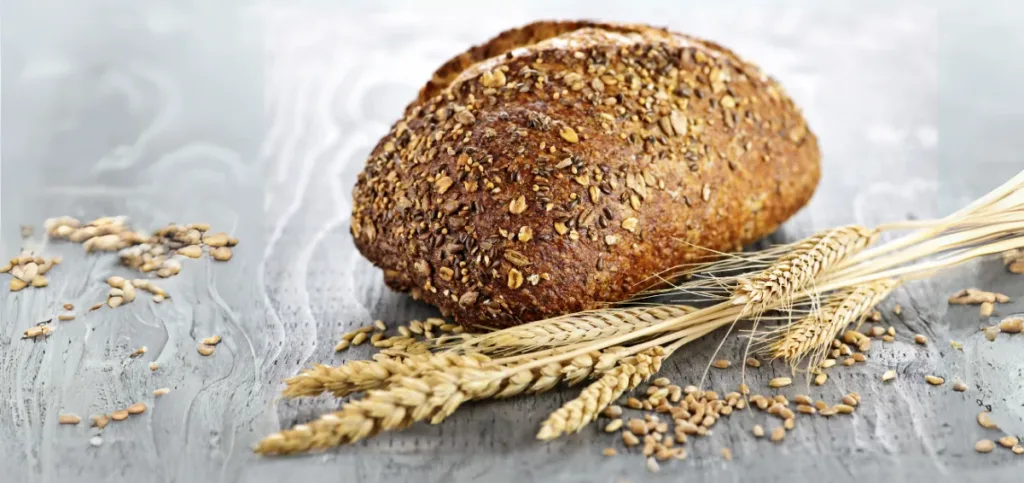
It is packed with nutrition and crunch. Typically, it includes sunflower seeds, pumpkin seeds, chia, and sesame. When made with whole-grain flour, it becomes one of the best whole grain bread choices for people seeking fibre, healthy fats, and texture in one slice.
Nutritional Composition
- High in fiber, healthy fats, and protein
- Loaded with antioxidants
- Supports heart and digestive health
- Promotes satiety
How to Make It
- Combine whole wheat flour with mixed seeds.
- Add yeast, honey, and olive oil.
- Let rise for 1 hour.
- Top with more seeds and bake at 375°F for 40 minutes.
Read Also: How to Pick a Good Cantaloupe
Final Thoughts
Choosing the best whole grain bread isn’t just about taste. It’s about nourishing your body with every bite. Whether you prefer the tang of sourdough, the crunch of seeded bread, or the soft texture of oat loaves, there’s a perfect option for everyone. Whole grain breads support heart health, improve digestion, and keep your energy stable throughout the day.
So the next time you’re in the bakery aisle or baking at home, skip the refined stuff. Reach for one of these best whole grain bread varieties to support a healthier lifestyle, one slice at a time.

